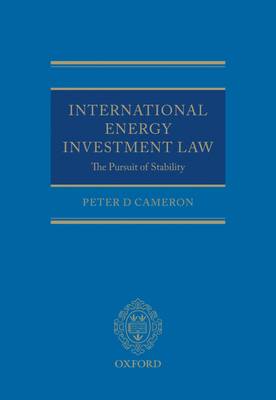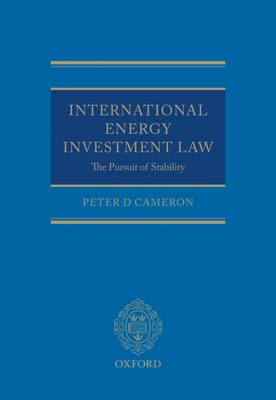
- Retrait gratuit dans votre magasin Club
- 7.000.000 titres dans notre catalogue
- Payer en toute sécurité
- Toujours un magasin près de chez vous
- Retrait gratuit dans votre magasin Club
- 7.000.0000 titres dans notre catalogue
- Payer en toute sécurité
- Toujours un magasin près de chez vous
676,95 €
+ 1353 points
Format
Description
At a time of unprecedented growth in arbitrations between investors and States over energy resources, International Energy Investment Law: The Pursuit of Stability examines and assesses the variety of contract- and treaty-based instruments in commercial and international law that strive to protect the respective interests of investors and States in the international energy industry. It covers most forms of energy, especially oil and gas, and considers issues arising from energy network operation including transit. It pays particular attention to their practical impact through an analysis of their enforcement by arbitration tribunals and bodies, such as ICSID, the ICC and the LCIA. The book also examines growing challenges presented by environmental and human rights concerns to the stability of long-term agreements. Investors in the international energy industry have long sought to secure guarantees from host States to mitigate the risk of unilateral revision of the deal at a future date. In recent years the traditional method of securing such guarantees has been supplemented by an unprecedented growth of international investment law in the form of BITs, MITs and other treaty-based instruments. Many States have also introduced guarantees into their domestic legislation. This 'multi-tier' regime of stability has fundamentally altered the legal framework for energy investors and host States and offers extensive scope for international arbitration in the event of disputes. It is a system that is currently being tested in a number of high-value commercial disputes as a result of a wave of unilateral State action, most evidently in Latin America and East Europe. The protections for investors are being tested as arbitrators develop new notions of 'legitimate expectations' and give content to 'fair and equitable treatment', while mapping out more precisely the duties which investors have to host States. This book examines critically the interaction between contract and treaty forms of stability in the new multi-tier setting, including two highly detailed regional case studies of Latin America and East Europe. In its concluding section, it looks forward to new challenges arising from climate change, human rights and environmental issues.
Spécifications
Parties prenantes
- Auteur(s) :
- Editeur:
Contenu
- Nombre de pages :
- 560
- Langue:
- Anglais
Caractéristiques
- EAN:
- 9780199545230
- Date de parution :
- 20-05-10
- Format:
- Livre relié
- Format numérique:
- Ongenaaid / garenloos gebonden
- Dimensions :
- 178 mm x 257 mm
- Poids :
- 1088 g

Les avis
Nous publions uniquement les avis qui respectent les conditions requises. Consultez nos conditions pour les avis.






